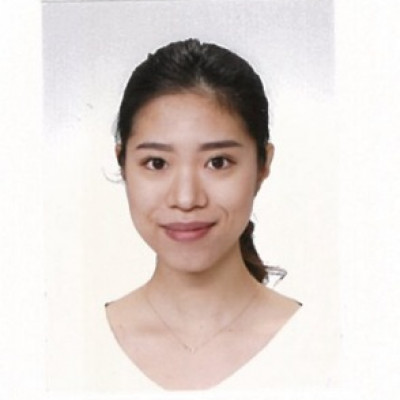Sessions / Teaching Younger Learners
Bridging Compulsory English Classes from Elementary to Junior High in Japan #2846
In this presentation, we will report on research in 2021 with 99 5th grade elementary students from three different elementary schools and 242 7th grade students from one junior high school in southern Japan. We will look at some ideas on how to help bridge the gap between Eigo Katsudo and regular compulsory English classes. Although our pilot research showed higher student motivation in junior high school, most research has shown that students like elementary school English lessons but do not prefer junior high English lessons. Ideas as to why there is a gap will be explored. Furthermore, the results from this initial pilot study showed that 77% of JHS students feel learning English in elementary school is useful in junior high. Our study also showed that 70% of junior high students reported that their English lessons progressively got harder. Reasons why this might be true and ways to help smooth the transition from elementary school Eigo Katsudo to junior high school compulsory English classes will be explored.
Creative Writing for Young Learners #2738
Teaching writing to young learners typically involves answering questions or reproducing formulaic sentences. Although this encourages accuracy, it limits chances for creativity, and may not be motivating for students. This presentation explores two innovative activities to encourage young learners’ creative language use whilst giving importance to positive feedback in creative writing activities. Both activities give learners opportunities to experiment with language and extend their use of it while having fun. The first activity is to write their own fairy tale. The genre is introduced using videos before encouraging students to create their own stories. Watching different stories each week gives students inspiration as well as meaningful input. Writing their own stories is a good way to encourage learners to use a wide range of vocabulary and phrases to deepen the content of their stories. The second activity is a written retelling of a short video story. Students watch the video, then they retell the story together in the class, which they write in their notebooks. In this way, learners are exposed to meaningful output in speaking and writing. Both activities can be adapted to any age group and any level of English proficiency.
Examining Responses to Various Question Types in Picturebook Read-alouds #2714
During read-alouds, a great deal of the benefit and enjoyment learners gain is due to the interaction from sharing the picturebook (Wells, 2003) making it a very important part of the read-aloud. Teachers are often told to use open questions over closed questions if at all possible (Paul, 2003) as they increase interaction and conversation (Lee et al., 2012). However, Japanese conversational styles as well as cultural and teaching styles mean both Japanese teachers and learners can find open questions very challenging (Hammond, 2007). This presentation discusses a small-scale case study which examined how 10-12-year-old Japanese elementary school low-level English learners respond to open and closed questions during interactive picturebook read-alouds. This presentation will discuss four main areas: the amount of interaction created by each question type, the different types of responses elicited, the situations where students could not respond to questions, and how class dynamics affected student responses. Participants will leave the presentation with a clearer idea of when the use of closed questions may be more appropriate than open questions during read-alouds in the low-level Japanese classroom.
Happily ever after: Post-reading projects for picture books #2859
Picture books are powerful tools for language learners. They tell stories through both words and pictures, and are a source of authenticity, motivation, and foundational literacy skills. However, once the story is told and the book is closed, there are still opportunities for meaningful learning to take place. This presentation will explore a variety of post-reading activities for young learners from preschool and up through elementary school ages, including retellings of famous stories, books made by students about themselves, and illustrated predictions of story resolutions. The talk will focus on creative art projects that allow children to engage with and personalize the themes, messages, and questions of a variety of picture book styles, such as wordless books, open-ended stories, and concept books. Key principles for choosing books, designing activities, and selecting materials will be discussed, along with suggestions for matching projects to age and ability levels. Finally, the potential for linking story and language content to teaching about subjects such as science, mathematics, and world cultures will be examined.
Analysis of Opinions and Intentions in Junior High School Textbooks #2740
MEXT (2017) revised the Course of Study to promote learners’ practical communication skills. In accordance with the revised guideline, new government authorized English textbooks for junior high school were published by six publishers in 2021. Since some Japanese learners tend to be passive, and hesitate to express different opinions and intentions from others in class, learning language expressions pertaining to ‘opinions and intentions’ are extremely useful in promoting effective communication in English. Therefore, how those textbooks foster learners’ discourse competence is of importance. This presentation outlines a study in which opinions and intentions in the newly published textbooks as one of the five functions of language are examined. Opinions and intentions include ‘offers’, ‘promises’, ‘stating one’s opinions’, ‘agreeing’, ‘disagreeing’, ‘accepting’, ‘refusing’, and ‘supposing’. The findings show that discourse structures in the newly published textbooks vary depending on textbook, and also that the newly published textbooks provide more dialogues with this function in comparison to older textbooks. Furthermore, this presentation will suggest pedagogical implications for developing learners’ communicative competence.
Cancelled How to Teach Programming to Young Learners in English #2980
Teaching programming has taken off in Japan since MEXT introduced it as a subject in elementary schools in 2020. English schools have also been offering programming courses as getting a job with high-paying IT companies such as Apple or Google also requires employees to have high-level English. The current trend in teaching young learners about coding is to use programs and games that incorporate the idea of block programming. This presentation will talk about how to teach the beginning stages of block programming to students from ages 3 to 12. We will discuss the most appropriate stages to teach programming to each developmental age. The presenter will talk about how non-native students learn English with coding. Also, the presenter will talk about various in-class games, toys, sites, and programs that can help educators teach programming effectively. And the best part is that you don't need prior knowledge to teach coding or to attend this presentation. You don't even need to have a computer to teach programming. Come to the presentation to find out why.
Bringing the World into English Classrooms #3303
Rita Mae Brown said, “Language is the road map of a culture. In this poster presentation, we will explain our approach to developing a classroom where students learn both the target language as well as about the target culture through three main programs: The first program, Local World in English Class, is a program designed to teach students about other cultures in English by using sports and cuisine. During the course of this program, students learn both the target language and also come to understand the relationship of language and culture. The second program, Global Citizen Education, aims to deepen students’ cultural awareness as well as to introduce global issues and to aid students in developing global competencies that allow them to subsequently participate in dialog about issues such as racism and discrimination, the role of NGO'S, and public diplomacy. The third program, English Guided Tour, allows students to study historical locations and then practically apply knowledge learned in English in order to function as a guide for international visitors to Korea.
Adapting a Model UN for high school EFL students of various levels #2831
Model United Nations has been growing within the last 30 years as an active-learning educational conference for high school students in Japan, for the purpose of raising awareness in global issues as well as allowing participants to convey creative, logical, and critical output to formulate solutions to world problems in a L2 environment. Many schools are taking interest in either participating in or hosting a Model UN for their students; however, as a Model UN is mostly conducted in English, teachers may question whether their students can successfully participate due to either low EFL levels or a lack of understanding in global issues. This presentation utilizes ongoing action research to answer questions pertaining to how a Model UN can be adapted for high school students of various EFL levels to participate, especially in regards to what topics to choose for debate and discussion, as well as how to prepare students for successfully participating in a Model UN through simple scaffolding techniques and idea formation, despite their EFL levels.
Interactive Classroom and Students’ Response in Junior High School #2727
This presentation will explore how to provide opportunities for interaction in English and how students have become more responsive in junior high school English classes. The Course of Study for Junior High School stated that teachers should teach English in English and develop students’ ability to communicate in English. However, teachers still focus on teaching grammar and vocabulary and not developing English interaction. Therefore, students were not used to using English for communication. In this study, the presenter provided a lot of interaction in English with junior high school students in every lesson. The lessons were conducted in comprehensible English to give students adequate input. The presenter provided interactional modification, such as asking questions about the topics or about the students themselves and also using visual aids. Giving positive feedback was also essential to encourage students. The study found that teachers’ utterances and support could elicit reactions from students and motivate them to use English in class. In addition, pair or group work helped students engage in class and made them feel less anxiety when speaking English. Providing interactive lessons and an environment where students could engage is closely related to students’ motivation toward learning and using English. Findings and implications will be discussed.
Effective use of questioning strategies in active classroom interaction #2730
This presentation will highlight the effective use of teacher’s follow-up questioning strategies to construct active teacher-student interaction in English lessons in Japanese junior high schools. The new Course of Study at junior high school has newly introduced “Teaching English in English” policy to give students much input and chances to speak English. However, if students are not used to communicating in English, they often find it difficult and keep silent, and the communication often breaks down. To cope with these situations, teachers’ questioning strategies have great potential to encourage students to answer (Wu, 1998). This presentation will explore how teachers can actively involve Japanese junior high school students in interaction and provide them with learning opportunities through the following questioning strategies: simplifying the questions, giving examples, repeating the questions, and asking further questions. The presenter designed the lessons and interaction based on these strategies. The lessons and interactions were recorded by videotape and analyzed by Conversation Analysis. Among these strategies, especially simplifying the questions and giving examples helped the students understand what the questions meant and respond to them. The presenter will share the techniques and students’ reactions and responses in the classroom based on the actual interaction data.











